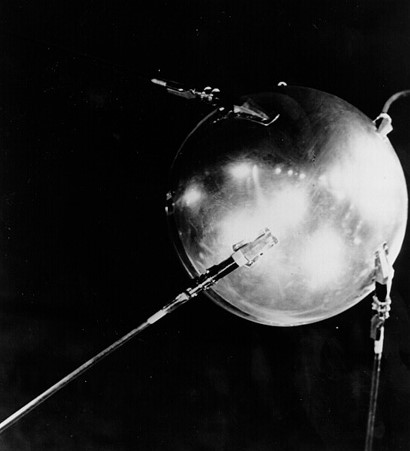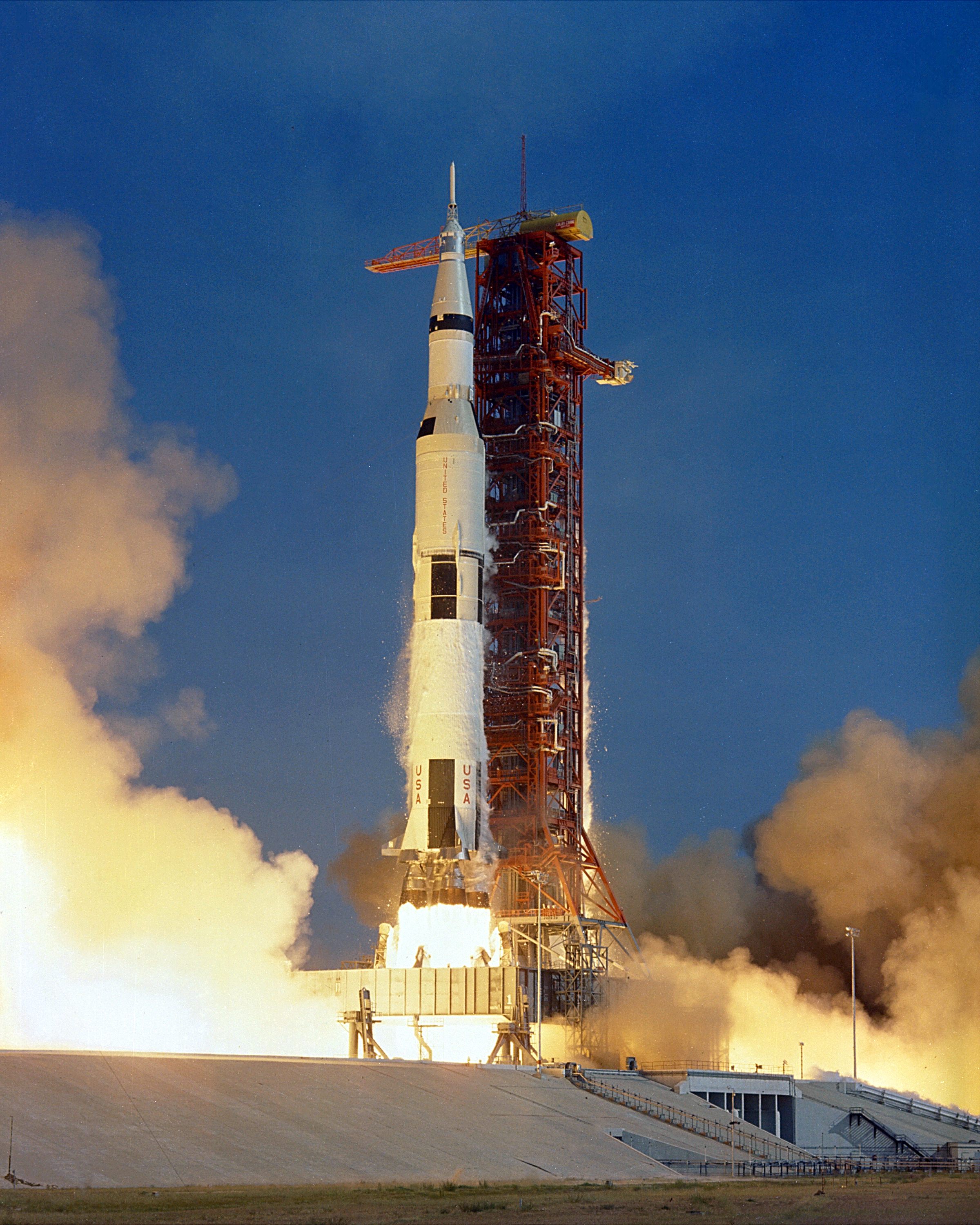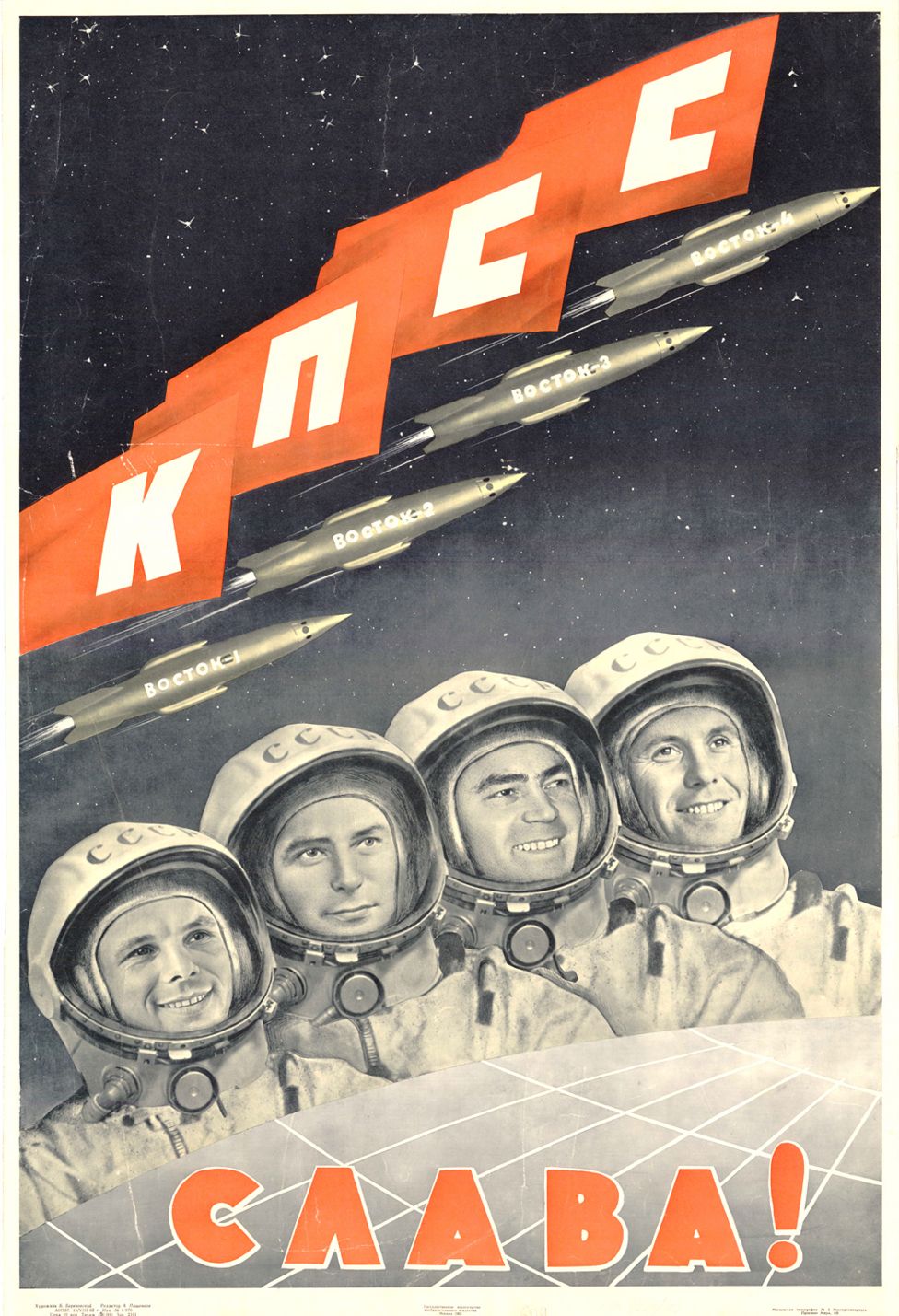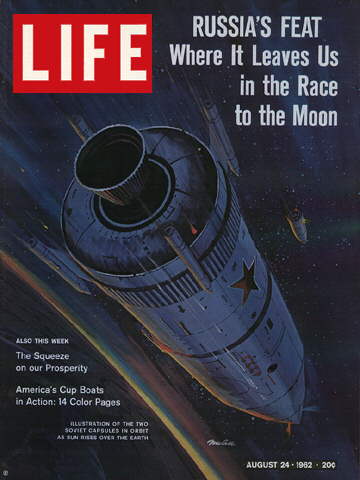Historical Argument
Thesis
The launch of Sputnik on October 4, 1957, began the Space Race between the United States (U.S.) and the Union of Soviet Socialist Republics (U.S.S.R.). Each country wanted to conquer space for military superiority and national pride. To this end, both nations used different communication strategies to shape public opinion, education, and the outcome of the Space Race. These forms of propaganda were the key to understanding each nation’s agenda, goals, and technological advancements during the Space Race.

Sputnik - history.nasa.gov
What is Propaganda?
Propaganda means communicating information for the purpose of helping or injuring a cause. This project examines propaganda's different meanings and forms in the Space Race, and analyzes the resulting immediate and long-term impacts.
Below are propaganda examples, including a children's song.

Saturn V Rocket - nasa.gov
"Zoom a Little Zoom (Rocket Ship)," 1959.

Soviet Poster, "Glory" - bbc.com
Disney's "Man in Space," July 18, 1956

LIFE Magazine, August 24, 1962 - originallifemagazines.com
Historical Context
During the Cold War, the U.S. and the U.S.S.R. competed to grow their military arsenals and global power. Space exploration became one aspect of this power struggle between communism and capitalism. The race to create military rockets turned into a competition to launch satellites and spacecraft that challenged each nation's technological knowledge.